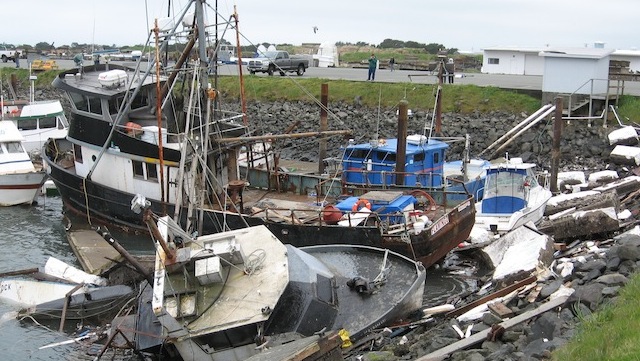
Scientists at Stanford may have found a way to build a better warning system for tsunamis. The key is listening, for the earthquake’s sonic signature.
When earthquakes rumble below the ocean floor, they can trigger the big killer waves we call tsunamis. But they also make sound waves. And those race ahead at ten times the speed of the ocean waves.
“These sound waves are very sensitive to vertical sea floor uplift, exactly the same thing that’s exciting the tsunamis,” says Eric Dunham, the Stanford geophysicist whose team at Stanford stumbled on that connection when they were modeling the 2011 tsunami that claimed more than 15,000 lives in Japan.
“When making plots of that, we just saw incredibly huge-amplitude sound waves, which is not something we were really expecting, Dunham told me in a phone interview. “It is,” he added, “something that’s obvious in retrospect.”
Those sound waves are the sonic signature that, if captured in real time, could give scientists a critical piece of information that’s been missing: the height of the waves likely to make landfall. Current systems can estimate the magnitude of an undersea quake, but not whether the slip of the fault occurred far beneath the ocean floor, or close to it. And that’s important.
“Shallow slip is what causes sea floor uplift and hence, large tsunamis,” explains Dunham.